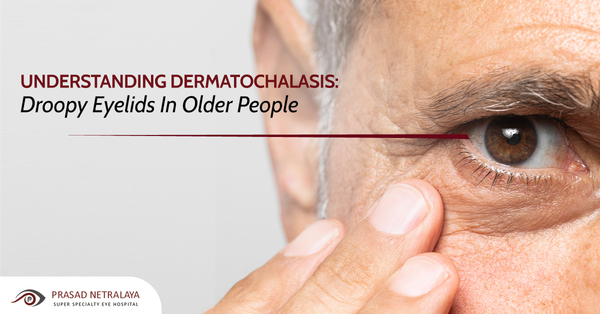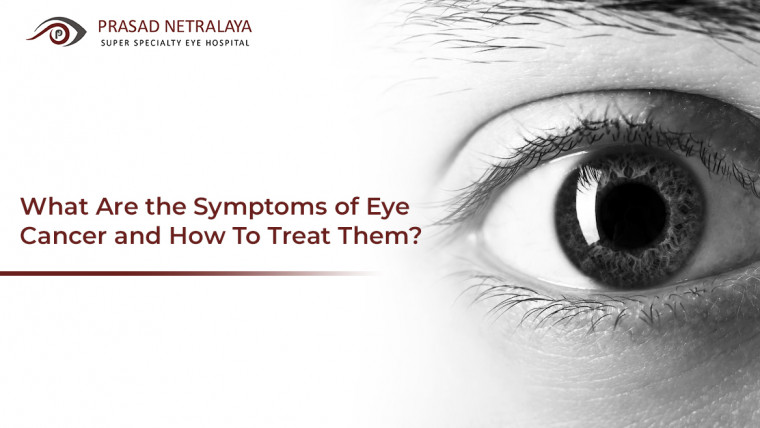Have you observed some older people having ‘droopy eyelids’ or loose and redundant skin on their eyelids? If yes, know that they could be suffering from dermatochalasis.
Dermatochalasis is a term used to describe the presence of loose and redundant eyelid skin — commonly seen in middle-aged and elderly people. It is a sign of periocular ageing, and is sometimes also referred to as ‘baggy eyes’.
Table of Contents
What Are The Symptoms Of Dermatochalasis?
The condition is usually bilateral and may be asymptomatic. However, some dermatochalasis symptoms that occur often are
- Eye-irritation
- Excess lid skin causing obstruction of superior visual fields
- Redundant upper eyelid skin that may be associated with herniation of orbital fat
- ‘Bags’ or wrinkles in the lower eyelids
- Fullness or heaviness of upper eyelids
Although more dramatically seen in the upper eyelids, dermatochalasis can also affect the lower eyelids.
What Causes Dermatochalasis?
Redundant or loose skin on the eyelids is often associated with the descent of eyebrows, fat herniation, and descent of mid-face. Some common dermatochalasis causes include —
- Ageing: Normal ageing changes the skin of eyelids. The changes could include loss of elastic fibres, thinning of the epidermis, and redundancy of the skin.
- Age-related degeneration of collagen: The epidermis may show a loss of collagen tissue, along with an increase of capillary vascularity and basophilic degeneration of the collagen.
- Loss of elastic tissue in the eyelid skin: At times, there could be loss of elastic tissue along with the loss of collagen tissue — leading to dermatochalasis.
- Weakening of the connective tissue of the eyelid
- Descent of brow complex and malar complex due to facial trauma
- Actinic exposure and smoking
Blepharochalasis Vs Dermatochalasis
How is dermatochalasis different from blepharochalasis? If you have this question in mind, dermatochalasis refers to redundant skin in the eyelid due to ageing — so the condition typically affects older people. Whereas, blepharochalasis is a condition that typically affects the upper eyelids in younger patients. Both the conditions have different causes as well.
Dermatochalasis could be caused due to any of the reasons we mentioned earlier. Causes of blepharochalasis may include the decrease in or loss of elastic fibres in the eyelid tissue, eyelid trauma from injury or illness, hormonal changes in a person, environmental or behavioural factors, etc.
How Is Dermatochalasis Treated?
The management of dermatochalasis should be carried out under medical supervision. It is usually treated with surgery. Here are some treatment methods —
- Blepharoplasty: If you’re wondering about dermatochalasis and its surgical treatment, you should know about blepharoplasty. The procedure is a permanent solution to dermatochalasis and is commonly referred to as an ‘eye lift’. It involves removing the excess skin, muscle and fat — and attaching the remaining skin to healthy connective tissue.
Upper blepharoplasty is performed through an eyelid crease incision which is hidden, and lower eyelid blepharoplasty is performed through an incision on the inside of the eyelid or an external incision that is also hidden below the lash line.
- Ptosis Surgery: Patients with associated ptosis — a drooping or falling of the upper eyelid due to a family history of ptosis or extreme fatigue.— may require ptosis surgery.
- Collagen Punctal Plugs: Temporary or permanent collagen punctal plugs may be placed, or punctal cautery may be done in patients with dry eyes.
If you are experiencing any symptoms of dermatochalasis, don’t ignore them. Avail a consultation to properly treat the issue and any vision problems — at Prasad Netralaya. It is Mangalore and Udupi’s most trusted Eye Care Hospital with highly skilled and qualified specialists and staff. Call us at +91 9513596565 or book an appointment if you wish to visit in person.
Dr. Vikram Jain, M.S. had his medical training (MBBS) from Kasturba Medical College, Mangalore, India. He did his master’s in Ophthalmic surgery from Kasturba Medical College, Manipal. He currently manages the Glaucoma department of Prasad Netralaya hospital.



